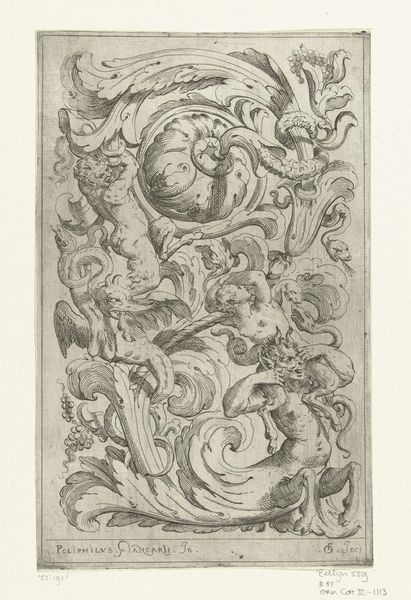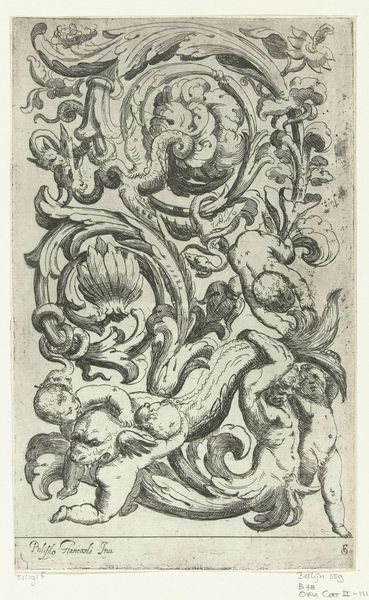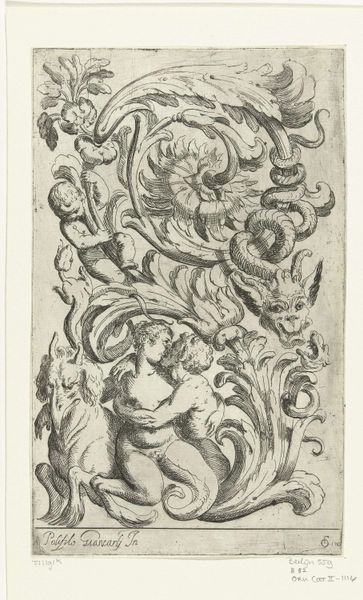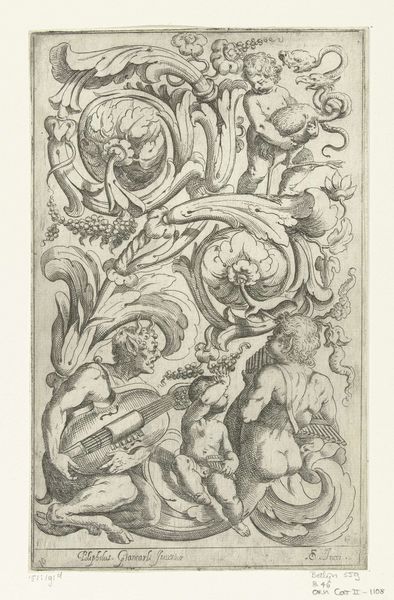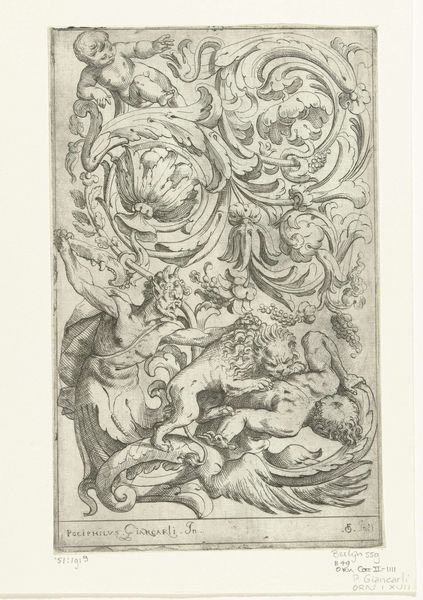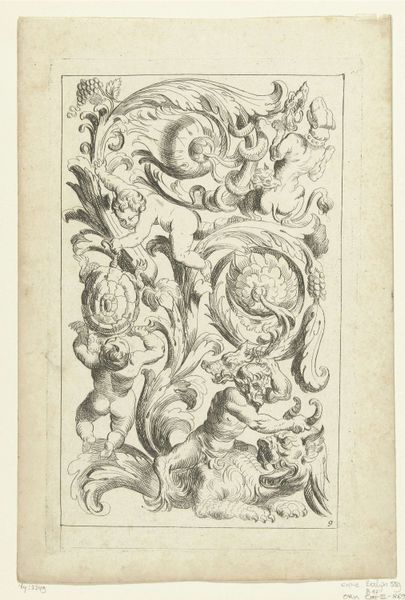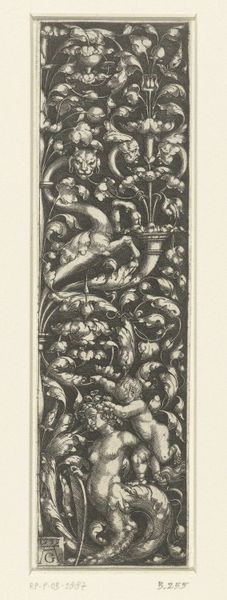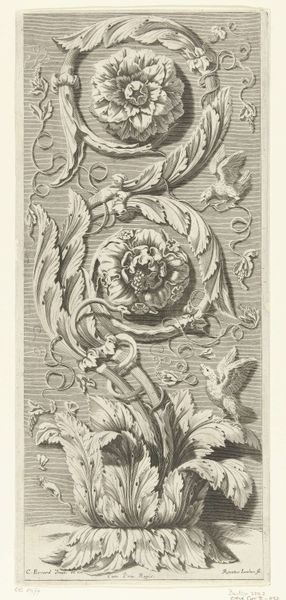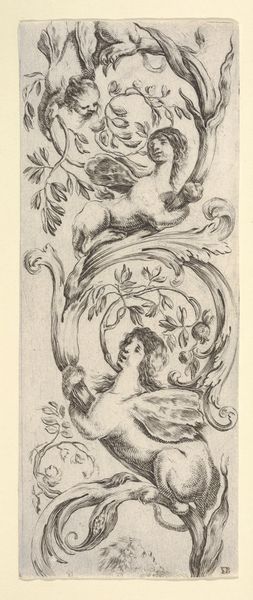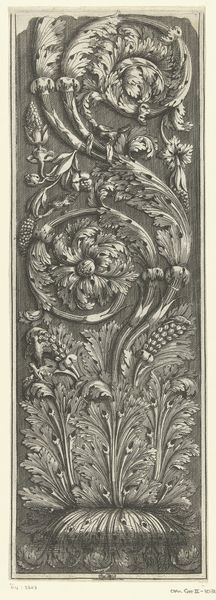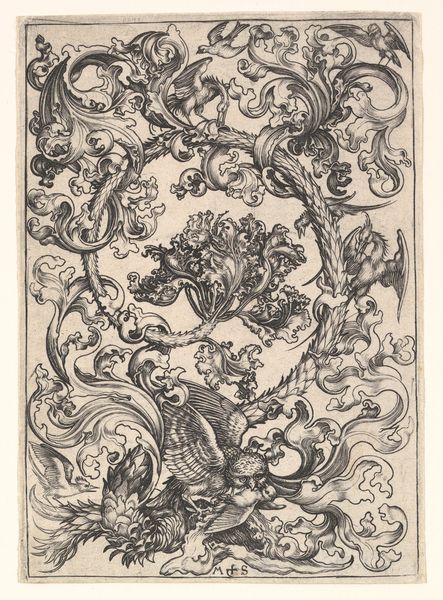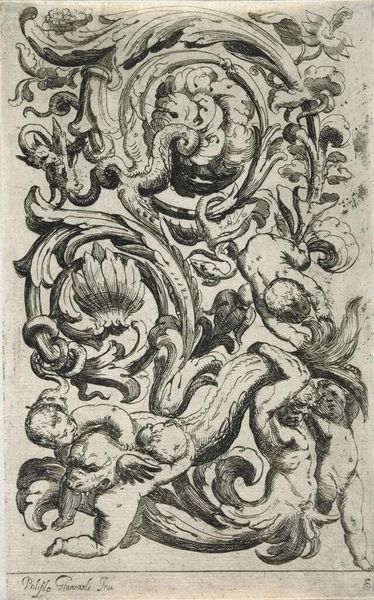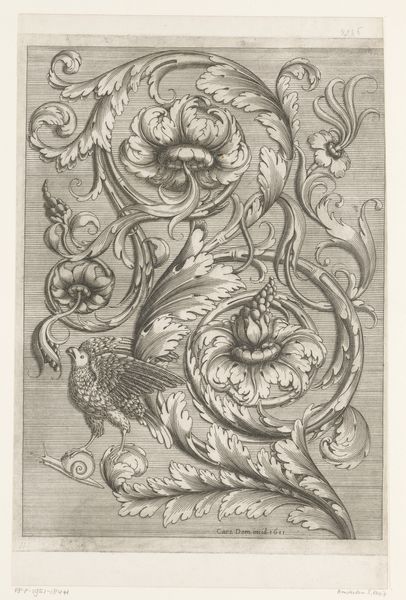
drawing, print, ink, engraving
#
drawing
#
baroque
#
pen drawing
# print
#
pen illustration
#
pen sketch
#
fantasy-art
#
figuration
#
ink line art
#
ink
#
line
#
history-painting
#
engraving
Dimensions: height 233 mm, width 148 mm
Copyright: Rijks Museum: Open Domain
Editor: This is "Bladrank, twee saters, twee kinderen en een draak," from around 1625, made by Odoardo Fialetti. It's a drawing, ink on paper I think, with really dynamic line work. It almost feels chaotic with all these figures interwoven. What do you see in this piece? Curator: I see a potent example of baroque allegory steeped in socio-political commentary. While the immediate impression might be chaotic, consider the context. Early 17th century Europe was wrestling with upheaval: religious wars, nascent capitalism shifting power dynamics. This image, brimming with satyrs, children, and a dragon, operates as a microcosm of these tensions. The satyrs, typically symbols of unrestrained desire, clashing with innocent children – could they represent conflicting social classes or moralities struggling for dominance? Editor: That's interesting, I was mainly focusing on the visual aspects and didn't really think of it in such a symbolic way. But if the children are "innocent," why are they involved in the fray? Curator: Precisely. Are they truly innocent, or are they being used as pawns, perhaps symbolic of future generations inheriting these conflicts? Fialetti invites us to question these power structures, to consider who benefits from this chaos and who suffers. Consider the dragon as representing perhaps a state in decline; what meaning can we draw from those wrestling it to the ground, including figures often relegated to the margins of polite society like the satyrs? This imagery challenges viewers to think critically about the ongoing negotiations in governance in their own societies. Editor: So it's not just a fantastical scene; it's actively engaging with the period's anxieties. The use of traditionally mischievous satyrs could also indicate some sly societal critique, right? Curator: Absolutely. Baroque art often employs allegory as a subversive tool. These images acted as critiques masked as decorative or historical pieces to invite interpretation and conversation amongst patrons. Thinking of it in this way definitely enriches the work beyond the aesthetics. Editor: Definitely food for thought. Thanks for highlighting the layers beyond the initial visuals. Curator: My pleasure. Art's power lies in its ability to reflect and challenge the societies from which they emerge. It invites dialogue, questioning, and ultimately, a more nuanced understanding of our world.
Comments
No comments
Be the first to comment and join the conversation on the ultimate creative platform.
